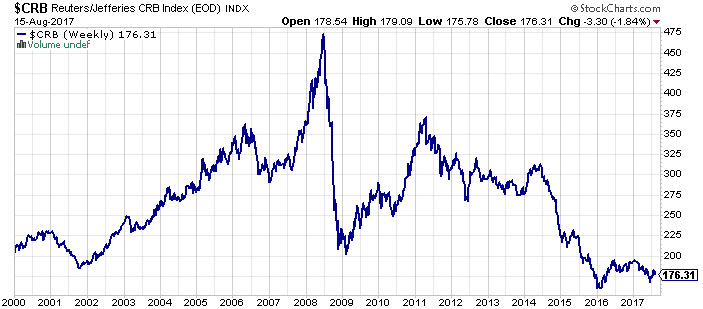Commodities are so common and present in every facet of our life- starting from our food, passing throughour cars and ending with smart phones. You must understand commodities if you invest in stocks or bonds. You really cannot be a successful investor in other markets without understanding them. Investing in commodities can be a hedge against a bear market in stocks, rampant inflation, even a major downturn in the economy.
In this article I will present the relationship between commodities market and the stock market. We will also take a look at their connection with the US dollar.
Commodities market in recent years
The CRB Index gives a picture of the commodities market in recent years.

Source: stockcharts.com
The index is comprised of 19 commodities including agriculture (like corn, soybeans, live cattle) energy (like crude oil, natural gas, heating oil), precious metals (silver and gold) and industrial metals (like copper, aluminium, nickel). I did not mention all of them but it is enough to understand that this index presents a wide picture of the commodities market.
Notice, that we are facing a very clear bear market. Since 2011 it has been decreasing from year to year. Prices reached new historical lows at the break of 2016/2017. Since January 2017 we have observed a price relief. Sentiment for those markets is very negative, we can clearly notice that investors turned away from commodities.
Usually, the market sentiment is very negative when we are close to the market bottom. So, negative market sentiment is a good signal for potential buyers according to the primary lesson of investing – buy value on the cheap.
Commodities and stock market
Two scientists, Barry B. Banister and Paul Forward carefully examined the relation between the commodities market and the stock market. They concluded that there is a negative correlation between these markets. The conclusion derived from their research provides even more surprising results: “stocks and commodities markets have alternated leadership in regular cycles averaging 18 years.”











Leave A Comment